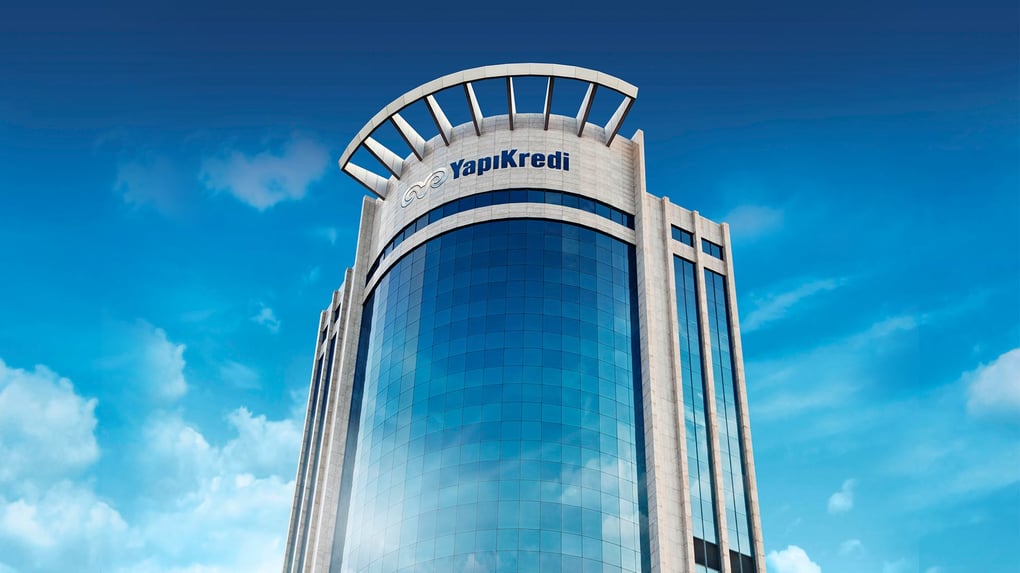
Client:Yapi Kredi Bank
Industry:Banking and Financial Services
Region:Europe
Finance and Accounting (F&A)
Walking, Running, and Sprinting with RPA

137
processes automated
20
unattended robots in operation
7
processes where AI, robots and humans cooperate
>2.2M
transactions enabled in Q1 2021
Client Overview
Yapı Kredi is the 3rd largest private bank in Turkey. The Bank serves its 9.7 million active customers with its 835 branches covering all regions of Turkey. Yapı Kredi serves its customers through retail banking (comprising of Card Payment Systems, Individual and Business Banking, Private Banking and Wealth Management), as well as Corporate, Commercial and SME Banking. The Bank’s operations are supported by domestic subsidiaries in asset management, brokerage, leasing and factoring as well as international banking subsidiaries in the Netherlands, Malta and Azerbaijan.
Yapı Kredi is the 3rd largest private bank in Turkey with total assets worth TL 534.7 bln as of the end of first quarter of 2021. The Bank serves its 9.7 million active customers with its 835 branches covering all regions of Turkey and more than 16k employees. Yapı Kredi delivers its products and services via its advanced Alternative Delivery Channels that consist of 4,526 ATMs, innovative internet banking, leading mobile banking, call center services.
Leadership within the bank realized that there were several repetitive activities that could have been subject to robotic process automation (RPA). A typical example was in the credit card operations area where there were many transactions that needed to be defined both in the core banking system and Visa/MasterCard® systems. These processes, among others, were the first to be automated in 2018, when the bank started experimenting with a range of different automation solutions.
Expanding RPA throughout the bank
In 2019 Yapı Kredi selected UiPath for their RPA solutions. The UiPath fast object capturing ability and its ease of use were the key factors during the selection process. Moreover, UiPath could provide the UiPath Academy—a self-service learning platform where the Yapı Kredi team could go online and learn from the range of resources and courses available.
We liked the ease at which we could learn and use UiPath Platform. We encouraged our operations team to learn RPA and sent them the UiPath Academy links. The first RPA team was formed of 4 operations personnel who willingly went online, in their spare time, and learned to train robots by themselves. We are very proud of this self-motivated and self-learning team which I believe is the main factor of sustainability.
Erkut Baloğlu • Executive Vice President, Process & Program Management
Currently a team of eight people is managing the RPA expansion within the bank. They come from various backgrounds, including operations, mathematics, statistics and general finance and engineering.
In the early stages, RPA was applied to customer care, operations, and consumer credit departments. Simple automation processes were developed to gather information about customer accounts and money transfers from multiple internal and external systems. All that information collected in one place. This resulted in an almost immediate impact on employee performance and customer service.
Within the customer care department, UiPath Robots could improve how agents handled customer feedback. Previously, agents would need to manually gather information from different systems and sources to address a customer query. Now robots can automatically pull together relevant information in one place. Customer feedback handling time has been reduced from 10 minutes beforehand to a fraction of the time using UiPath Robots. This enables the employees to focus on more value-added activities rather than manually collecting information on customer accounts. For instance, in the call center this additional time enables the team to sell more products and perform customer service duties.
During the COVID-19 pandemic, UiPath helped the bank in several ways. As the pandemic took hold, regulations were quickly put in place and customer needs changed rapidly. Robots increased the speed and helped the IT system to adapt to the various new COVID-related situations.In some cases, the bank even started using RPA robots as a substitute before the actual IT system itself changed, as RPA is much quicker and easier to amend and implement than the IT system.
Robots helped the bank a lot to follow certain regulations, especially making controls, reconciliations during night, raising flags, and pointing suspect transactions. For instance, allowing customers to cancel credit through the Yapı Kredi mobile app. The robots would take the cancelation request and process it through the IT system. This implementation could be done quickly, while underlying changes to the IT system could then be performed over a longer period.The expansion period was the phase when the bank merged the work of the UiPath Robots with that of humans, the employees got used to approve transactions made by robots, and robots started reconciling human made transactions. Briefly, they learned to work together.
Adding the power of artificial intelligence
While early RPA implementations were relatively simple, Yapı Kredi has now started incorporating artificial intelligence (AI) into its automations, and is exploring ways to allow RPA, AI and employees to collaborate effectively together. For instance, in the auditing process, the bank has implemented AI, document understanding, and image processing to not only help automate various processes, but also use robots as smart assistants for the auditors, allowing them to focus on more value-added activities.
The audit process was changed, whereby the human would define the scope of the audit. The robot would then collect the relevant documents and information which would be run through an AI algorithm for signature and other checks. Any exceptions would be flagged by a robot, which would then be checked by a human auditor.
The result is a great increase in scope, before delegating to software robots, the scope was a sample of 50-100 files per branch, while now all loan files are in scope. Also, 15% of the auditors time was released, which enables them to focus more on interpreting and analyzing risky cases, rather than dealing with operational issues.
The next stage is to add artificial intelligence on top of the robot, and human employee by developing a work-sharing approach. AI is good at interpretations, humans are the decision makers while software robots will act as assistants to humans, allowing them to concentrate more on risky and value-added tasks.
Erkut Baloğlu • Executive Vice President, Process & Program Management
Yapı Kredi now has 20 robots running on 137 processes across almost every department in the bank, from Internal Audit, to Credit to Operations and Retail Banking. In 2020 alone, robots enabled over four million transactions and as they move towards intelligent automation (IA) they expect this number to continue rising.
“We plan on leveraging the ‘triangle’ of the human employee, AI and RPA. AI will be able to conduct image processing and document recognition, the robots will automate the repetitive tasks and the employee will perform tasks that require decision-making. We know that if we want to see more benefits, we need to expand the use of RPA and that is exactly what we plan on doing.”
Related case studies
Ready for your own case study?
Speak to our team of knowledgeable experts and learn how you can benefit from agentic automation.




